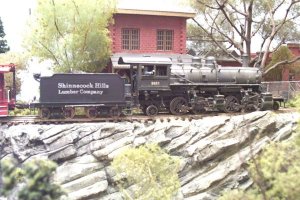Marty,
I replaced the old open frame motor with a can motor for a couple of reasons. Can motors have skewed armatures, so "cogging" is greatly reduced. This makes the can motor a quieter running motor.
Then, a can motor operates with about 150-200 milliamps of current at full voltage, as opposed to the old open frame motor which needs about 500 milliamps (half an amp) to run. That goes up rapidly as the load increases. The decoder I chose, because of its physical size, is rated at 1 amp, 1.5 amps peak. A stalled open frame motor can easily draw 1-1.5 amps and could burn out the decoder.
Most can motors today have the brushes isolated from the frame of the motor, and can be installed without much concern. In the close up photo, you can see a lot of white around the motor. This is a styrene plate I had to mount in the tender floor because I had removed so much floor to put the original motor there. The can motor is adhered to the styrene with silicone adhesive, and is further isolated from the frame.
As in most brass locos, the tender is the left rail pickup, and the loco is the right rail pickup. Left rail is routed to the motor, in the boiler, through the drawbar, which is insulated from the loco frame. I replaced the drawbar as the conductor, with two wires, simulating the water hoses from the tender. these plug in to connectors epoxied to the tender frame. (the green things sticking up on the front of the tender frame).
Pete


